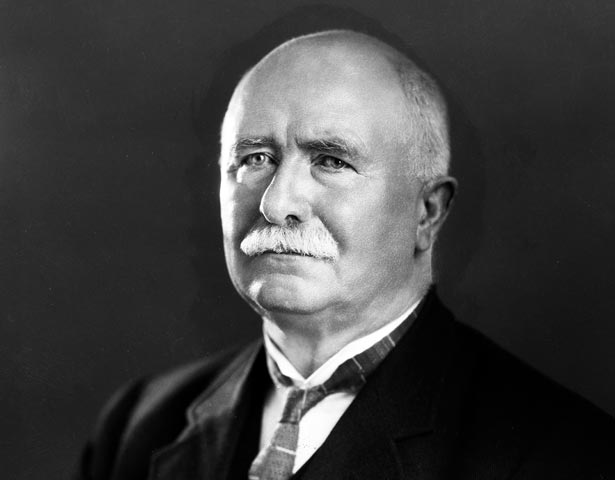
William Massey is our second-longest serving leader. Although he was reviled by the left for crushing workers in 1913 with his ‘Massey’s Cossacks’ (strike-breakers), his legacy is being re-evaluated.
Massey kept most of the Liberals’ reforms, cleaned up the public service, increased home ownership rates and spent more on education, roads and electricity. His Reform Party also established meat and dairy producer boards.
‘Farmer Bill’ joked that he was atop a haystack when invited to contest the by-election that sent him to Parliament. The telegram was passed up on a pitchfork. Through hard work and sound tactics, this conservative Ulster Protestant built an effective opposition to the Liberals. Reform appealed to cow-cocky country, rich city seats and to northern voters resentful of the South Island-dominated Liberals. Massey used the issue of the freehold to peel away farmers who wanted to buy, not lease, the Crown land they farmed.
Massey was a better Cabinet maker and manager than Richard Seddon or Joseph Ward. He had to be, since only the 1919 election gave Reform much of a majority over the Liberals and Labour. He was not afraid to appoint strong men to Cabinet.
He also had to govern during war. In 1915 the governor persuaded Massey and Ward to form a wartime coalition, the National government. Ward’s contempt for Massey caused difficulties, but the ministry held until 1919.
Massey also put the prime ministership on the international stage by serving in the novel Imperial War Cabinet, spending extended periods in London. Signing the Treaty of Versailles on New Zealand’s behalf as a separate nation marked a turning point in our diplomatic history, but this ardent imperialist typically thought little of the act.
By Gavin McLean
Further information:
How to cite this page
'William Massey', URL: http://www.nzhistory.net.nz/people/william-massey, (Ministry for Culture and Heritage), updated 10-Nov-2014



Community contributions